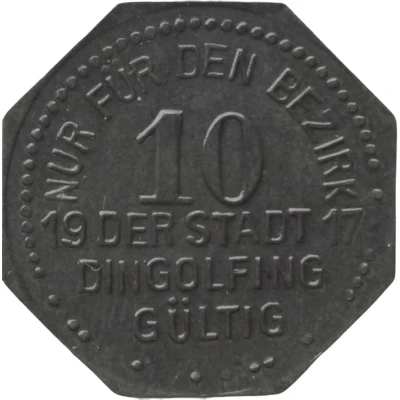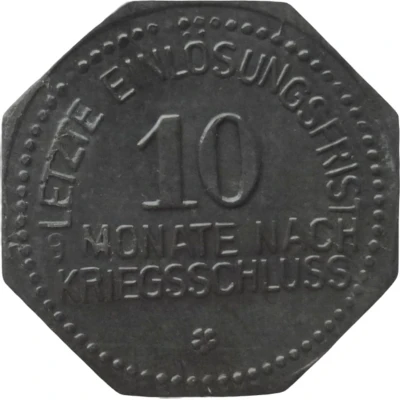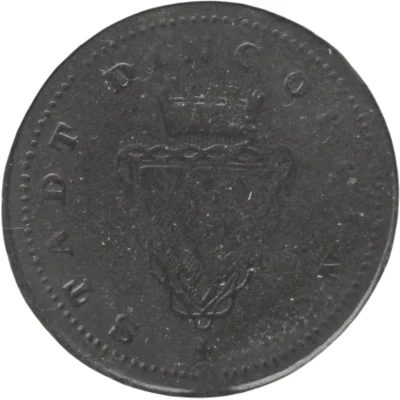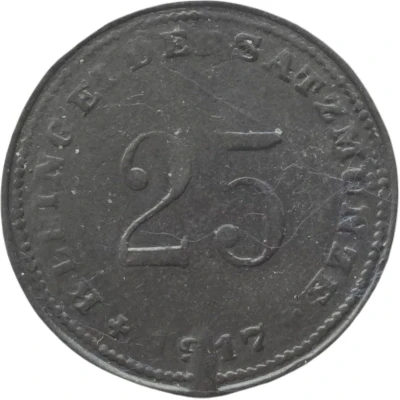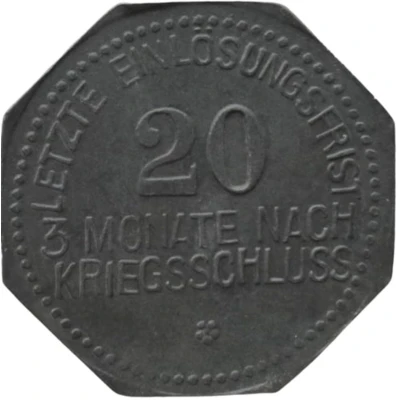
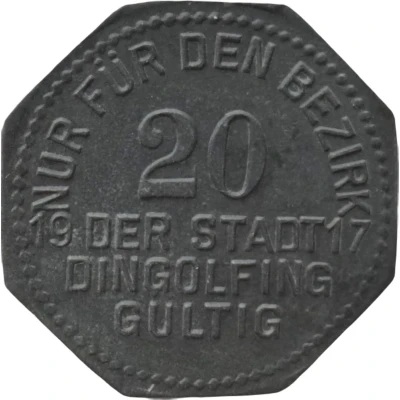

© Willem63 (CC BY-NC-SA)
20 Pfennigs - Dingolfing
1917 year| Zinc | 2.5 g | 22.2 mm |
| Issuer | City of Dingolfing (Federal state of Bavaria) |
|---|---|
| Emperor | William II (Wilhelm II) (1888-1918) |
| Type | Standard circulation coin |
| Year | 1917 |
| Value | 20 Pfennigs (20 Pfennige) (0.20) |
| Currency | Mark (1914-1924) |
| Composition | Zinc |
| Weight | 2.5 g |
| Diameter | 22.2 mm |
| Thickness | 1.1 mm |
| Shape | Octagonal (8-sided) |
| Technique | Milled |
| Orientation | Medal alignment ↑↑ |
| Demonetized | Yes |
| Updated | 2024-10-04 |
| Numista | N#338610 |
|---|---|
| Rarity index | 95% |
Reverse
Pearl rim, legend surrounding above denomination and below.
Script: Latin
Lettering:
LETZTE EINLÖSUNGSFRIST
20
3 MONATE NACH
KRIEGSSCHLUSS
Edge
Plain
Interesting fact
The 20 Pfennigs - Dingolfing 1917 coin from the City of Dingolfing (Federal state of Bavaria) made of Zinc weighing 2.5 g is interesting because it was produced during a time of economic and political turmoil in Germany. The coin was minted in 1917, during World War I, when the country was experiencing severe economic difficulties, including inflation and a shortage of metals. As a result, the German government was forced to use alternative metals, such as zinc, to produce coins. This coin is a unique example of how a country's currency can be impacted by historical events.
